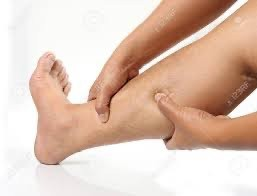Your legs get you to keep you mobile, they are the strongest and most powerful parts of the body. In sheer bulk, they account for roughly 40% of your body weight. The thighbone is your largest, strongest bone, so strong, in fact, that it takes approximately 400Kg of force to break. Similarly, the hip is your largest joint and one of the most stable. And powering it all, the leg and buttock muscles are among the strongest you have. In short, centuries of evolution have prepared your legs to be able to withstand a beating on a daily basis.
Yet there are so many ways for things to go wrong. For example, overweight and obesity can take a toll, adding to the stress on bones, joints, tendons, ligaments, and other tissues. A strong impact whether from a fall, a sports accident, or a car crash can cause bones to fracture and muscles to tear. Painful nerve damage can result from a disease such as diabetes. Poor circulation can lead to pain in the calves and ulcerations of the skin.
Fortunately, leg problems do not usually signal a medical emergency, unless it’s a trauma. Even if your leg pain does not require urgent action, you should consult FootSecure, about any persistent, unexplained problem. Sometimes it can signal a systemic problem, such as heart disease or diabetes. There are tests to pinpoint causes and once you have a diagnosis, treatments exist that can at least reduce your pain, if not fully resolve it.
Leg pain can strike at any age. In childhood, you may have had growing pains or broken a leg. As an adult, you’re more likely to suffer muscles strains or shin splints. In advanced age, arthritis becomes increasingly likely. According to some reports. nearly half of Indian women above 60 years have knee osteoarthritis, and a quarter develops hip osteoarthritis.
The vulnerability of the legs comes in part from the fact that we rely on these limbs for so much. While it’s true the legs are designed for durability, the human life span for most of the evolutionary time was much shorter than it is today. In the 1940s the life expectancy in India was about 40years, and in 2018 it is 68years, human legs today have to work longer than they used to in the 20th century, along with the other organs. Your joints are particularly vulnerable because of their complexity and the stresses you subject them to, especially the hip and knee joints. Muscles, Ligaments, Tendons, Arteries, Veins, Lymphatic Systems, and Nerves can also cause various problems in the lower limbs.
Your legs can also act as an indicator of your overall health. Although some symptoms you may experience are specific to a leg problem, others can suggest trouble with your heart, nervous system, kidneys, or other organs.
In this series of articles on the various conditions of the Leg, I intend to cover the following, Keep an eye on the page.
- Deep Vein Thrombosis
- Hamstring Strain & Tear
- Iliotibial band Syndrome
- Meralgia Paresthetica
- Oedema & Cellulitis
- Muscle Cramps
- Restless leg Syndrome

